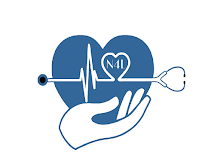Infection Control based
When talking about Infection control there is 2 axis is mainly recommended to block spread of infection
1. Standard precautions for all patients
2. Transmission based precautions
Standard precautions for all Patients
It’s used for all patients care as you see from word all patients this precautions depends on some measure like risk assessment , use common sense practice , personal protective equipment’s (PPE) that health care provider use to protect them self’s and other patients from infection and block spread of infection cycle from one patient to another
A. Perform hand hygiene
It’s the most simple effective way use to prevent infection &
block cycle of transmission . it helps with germs that are
resistant to antibiotic that are difficult if not impossible to affect by treatment . there is about 1 to 31 patients has at least one
health care associated infection that result of health care
providers just clean there hands less than half of time the should
B. Use personal protective equipment (PPE)
If in a situation that there is expectationof possible exposure to infectious material you must wear PPE. It composed of (Gown (apron) - different type of Mask – Goggles or face shield - Gloves)
Sequence of wearing PPE is:
1-Gown: cover fully parts of body from neck to knee, arm and wrist and wrap around back
2-Mask: ties secure at middle of head & neck, fit flexible band to nose – snug face below chin with checking respirator
3-Goggles: Over face and eye
4-Gloves: Extended to cover wrist to absolute isolation Gown
(apron)
For Safely remove PPE:
first: PPE should be removed before leaving patient room
except Mask remove it after leaving
1- Gown & Gloves : Gown front sleves out side of gloves are
contaminated
2- Goggles or face shield : from back
3- Mask : without touching the front cover just grasp the back and wash hand after finish immediately
4- Wash hand or use alcohol based hand senitizer immediately after remove all PPE
C. Follow Respiratory hygiene/Cough principles
1. Visual alert: Active department like ER-Physician office-Clinics)are highly risk for respiratory atransmission infection. It’s important to instruct patient and relative of respiratory infection symptoms of respiratory infection.
2. Respiratory hygiene/Cough:
Covering mouth to contain respiratory secretions
dispose tissue can help as well hand hygiene
3. Masking & separation person with respiratory symptoms: Mask like : N-95, surgical mask, procedure mask
keep rooms to patients have respiratory infection separated from others
4. Droplet precautions:
hand hygiene – put mask (all PPE if needed) – dispose of Mask – perform hand hygiene
D. Ensure appropriate patient placement:
If not infectious use standard precarious if infected then classified to (Droplet contact-airborne) infection
Contact: Same precaution as staff
Droplet: Restrict visitor number – same precautions
Airborne: Restrict visitor – N-95 – negative pressure room
E. Properly handle & clean & disinfect patient equipment’s, instrument and devices
1. Environmental control
2. Disinfected and Sterilization
3. Environmental Cleaning
F. Follow safe injection practices
1. Aseptic technique
2. Don’t administer medication from syringe to multiple patients 3. Fluid infusion & administration set
4. Single dose vial for parenteral medications
5. Not administer single vial or ampule to multiple patients 6. Sterile cannula, syringe or needle is used with multi dose vial 7. Multi dose don’t kept in immediate patient area
8. Don’t use bag or bottle of IV solutions to Multiple patient 9. In lumbar puncture wear surgical mask
G. Ensure health care worker safety with proper handling needle and sharps: 1. Organize layout
2. Minimize handling of injection equipment (no
recap or bend or carry a lot)
3. Clean injection environment before and after
4. Safe disposal
5. Instruct health care workers about sharps and
risk factors
6. Describe safe practices in gloving, handling
sharps
7. What is done when needle-stick occur??
Reference:
1. https://www.cdc.gov/infectioncontrol/basics/index.html
2. https://www.who.int/csr/resources/publications/4EPR_AM2.pdf
3. https://www.cdc.gov/hai/pdfs/ppe/PPE-Sequence.pdf







0 comments:
Post a Comment